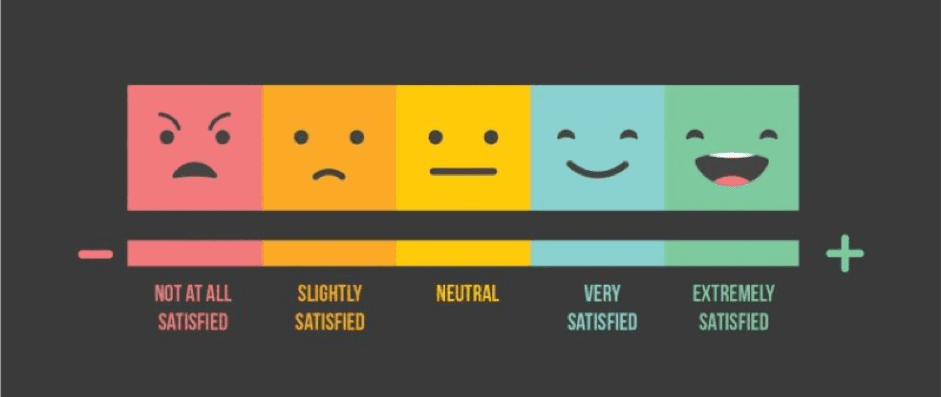Doing research into your audience is one of the most valuable endeavors for a business. Through such research, you can learn more about your customers, understand their experience, and create products they will be more interested in.
To perform such research successfully, you will need to create questionnaires that will directly ask your customers about the topics you are most interested in. Hence, here is a step-by-step guide to writing better research questions.
#1 Define Broader Themes You Want to Explore
First, you need to define the broader themes of your research. What exactly do you want to explore? What do you want to learn about your audience? Defining these themes will help you direct your research and create the kinds of questions that will answer very specific questions you have about your customers.
Start with a broad topic. You can also choose your focus (e.g. brand vs product). Then, narrow it down a little for this specific survey you will be performing. If you want to explore multiple aspects of the theme you chose, then you will have to focus on those aspects in future research. You can’t explore everything all at once.
#2 Make a List of Topics within These Themes
Next, you will need to make a list of very specific topics or points within the themes you chose for your research. For instance, if you decide to explore the perception of your products by your customers, you could focus on a specific product line you are offering or certain characteristics of the products (e.g. usability, longevity, visual attractiveness, etc.)
You can use the information you already have to guide the way you choose the topics for research. For instance, you can consult user-generated content to see how your customers are currently discussing the topic you want to perform research on. This way, your survey will be more focused.
#3 Decide in Which Order You Will Ask Questions
Now that you have a list of topics you will be exploring, you will need to organize them in the order in which you will be asking the questions related to these topics. The best way to do this is by grouping your topics and then ordering them in a logical way (e.g. chronologically, in a descending or ascending order, etc.)
By organizing your topics, you are pretty much creating an outline for your questionnaire. You can still change the order later on if you feel like it, but it’s best to create a structure for your survey during the planning stage.
#4 Create Different Types of Questions
Once you have the topics, you can create the questions based on those topics. If you need help making your questionnaire, you can hire an experienced writer from the writing services reviews site Trust My Paper to help you. It’s important to create different types of questions that will help you fully understand each customer. Here are the three main types of such questions that you should include in your questionnaire:
- Customer Introduction – These are introductory questions that help you understand what kind of person the customer completing the survey is. Start with the basics like age and gender and then move on to more customer-specific questions like buying habits and preferences.
- Topic-Specific – These questions are the ones related to the topic you are conducting your research on. For instance, you could be asking questions about what the person likes or dislikes about a specific aspect of the topic you are exploring.
- Product-Specific – These questions are similar to the topic-specific ones, but you will have to be asking them about your products. No matter what kind of research you are performing, you will likely have at least one or two of these because your research is meant to help you provide better customer experience which includes offering better products.
- Additional – These can be any other questions you want to ask as long as they are relevant to your research. It’s also worth including a question about the survey itself to get feedback on it that you could use for creating better surveys in the future.
#5 Simplify the Questions to Make Them Answerable
In case you created overly complicated questions, you will need to simplify or break them down to make them answerable. In fact, you need to go through your questions regardless of whether you think they need to be simplified. Simply editing them and improving them is necessary for creating their best versions.
You can even approach someone to get a different perspective on the questions and get some tips on how you can improve them. Just ask one of your co-workers or teammates about this (but keep in mind that you shouldn’t ask your customers just yet).
#6 Avoid Influencing Answers Through Phrasing
You need to be particularly careful with your phrasing because you could accidentally create questions that will influence the way people answer them. Such questions are inherently biased or written in a way that will guide people to answer them in a specific way.
If you want to get truly accurate and honest answers, then your questions need to be neutral and worded in a way that won’t make your respondents biased when answering them. Also, avoid asking questions that may have “correct” or “incorrect” answers (e.g. politically-charged questions).
#7 Include Questions in Different Formats
As mentioned earlier, you will need to use different types of questions in your questionnaire. If you need help with that, you can consult the best essay writing agency and find a writer who will improve your survey. And in addition to different types of questions, you will also need to use different formats, including:
- Multiple-Choice – These questions have multiple answers that the respondent needs to choose between.
- Scale-Based – These questions ask the respondent to give a rating on a scale.
- Open-Ended – These questions let the respondent give their own answer either in a few sentences or in a longer response.
#8 Proofread and Edit Your Questionnaire
Last but not least, don’t forget to proofread and edit your questionnaire. You can use Grammarly to help you find grammatical mistakes and Hemingway Editor to find stylistic issues and correct them. Still, you will need to rely on yourself to find factual errors.
Don’t forget that you can reorder your questions if you feel like that is necessary. It’s best to stick to the structure you created while planning, but it’s okay if you change the order of questions now as long as it makes sense to reorder them.
Final Thoughts
All in all, writing research questions that will help you better understand the experiences of your customers is essential for the success of your customer surveys. Use the tips in this article to help you start creating better questions for your surveys.
- How to Empathize with Your Users - May 30, 2023
- How UX Writing Can Help Create Good Design - March 28, 2023
- How to Use Storytelling in UX - January 8, 2023
![]() Give feedback about this article
Give feedback about this article
Were sorry to hear about that, give us a chance to improve.
Error: Contact form not found.




